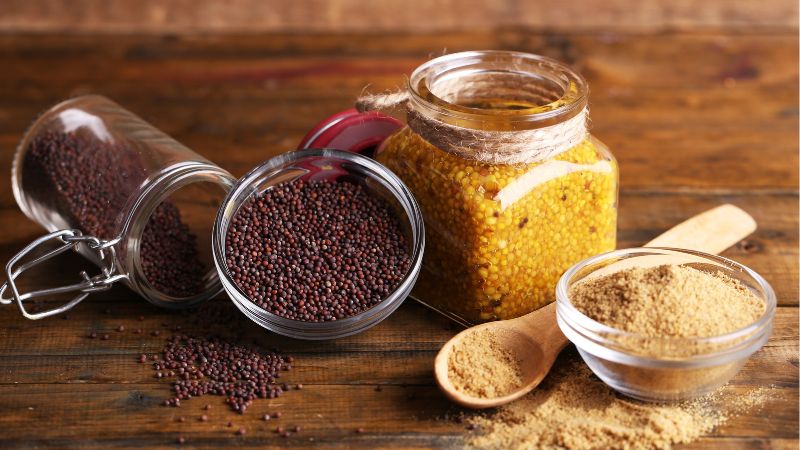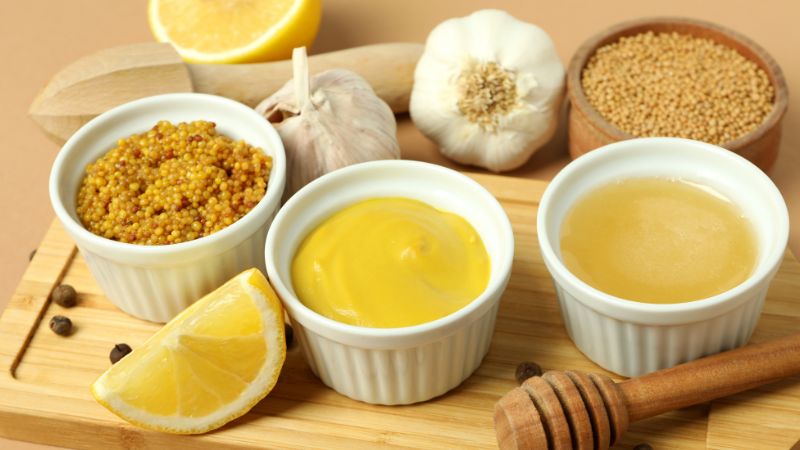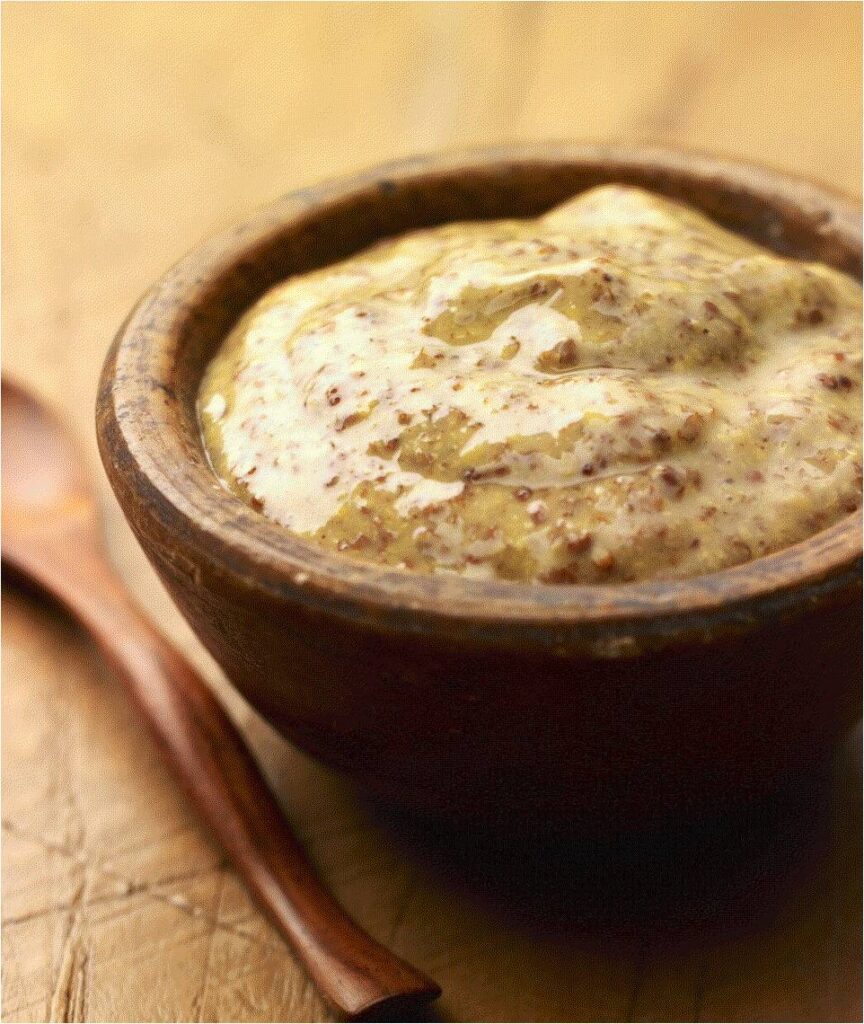Mustard, in all its forms, is one of the most versatile and enduring staples of the culinary world. From the humble yellow squeeze bottle found at ballpark concession stands to the refined jars of Dijon gracing French bistros, mustard has made its mark across continents and centuries. But this unassuming condiment is just one expression of the mustard plant, a member of the Brassicaceae family that also includes cabbage, broccoli, and kale.
Its seeds, leaves, and oil have found their way into cuisines around the world, serving as a spice, a preservative, and even a medicinal remedy. The history of mustard stretches back to ancient civilizations, where it was prized not only for its flavor but also for its purported healing properties. Over time, mustard has evolved into a culinary chameleon, enhancing everything from sandwiches and sausages to curries and charcuterie boards.
What sets mustard apart, however, is its distinctive pungency – a sharp, nose-tingling heat that lingers just long enough to make its presence known. This unique characteristic is the result of a fascinating chemical reaction that occurs when mustard seeds are crushed and mixed with liquid, releasing compounds that tantalize the senses.
In this exploration of mustard, we’ll dive into its botanical roots, its journey through history, the science behind its bold flavor, and the cultural anecdotes that have cemented its place in our kitchens. Whether you’re a culinary adventurer or simply a fan of a well-dressed hot dog, there’s more to mustard than meets the eye.
the plant behind the condiment
botanical background
Mustard plants belong to the Brassicaceae family, sharing lineage with cabbage, broccoli, kale, and radishes. The most commonly cultivated species include Brassica nigra (black mustard), Brassica juncea (brown mustard), and Sinapis alba (white or yellow mustard). Each species brings its own unique flavor profile and culinary application.
Mustard thrives in temperate regions, with major producers including Canada, Nepal, and India. The plants are typically grown for their seeds, which are harvested once the seed pods mature and dry.
Mustard leaves are also consumed as greens in many cuisines, particularly in South Asia. The plant’s resilience, rapid growth, and diverse uses make it a valuable crop worldwide.
cultivation + harvesting
Mustard cultivation is relatively straightforward, making it popular among farmers worldwide. The plant prefers well-drained soils, ample sunlight, and moderate temperatures, thriving in both temperate and subtropical regions. Major producers include Canada, which leads global production, followed by Nepal, India, and France, each contributing distinct varieties and flavors to the market.
Seeds are sown in early spring or late summer, depending on regional climates. After about 90-120 days, the mustard plants produce slender seed pods that are harvested once they turn brown and dry. Harvesting typically involves mechanical cutting, followed by field drying to reduce moisture content. The plants are then threshed to separate the seeds from the pods.
Post-harvest, mustard seeds are cleaned, sorted, and sometimes ground or processed into oil, paste, or spice blends. This careful cultivation and processing ensure that mustard maintains its distinctive flavor and quality in global culinary applications.
mustard seeds and their culinary versatility

Mustard seeds come in three primary types, each with its own distinct flavor and culinary uses.
black mustard (Brassica nigra)
Known for its intense heat and pungency, black mustard seeds are often used in Indian cuisine, especially in tempering spices for curries, dals, and pickles.
brown mustard (Brassica juncea)
Milder than black mustard but still packing a punch, brown mustard seeds are commonly used to make Dijon mustard and in various Asian dishes.
yellow mustard (Sinapis alba)
The mildest of the three, yellow mustard seeds are often used in American yellow mustard, pickling, and spice blends due to their subtle heat and slightly sweet undertones.
This variety allows mustard to adapt to countless culinary traditions, from bold Indian curries to classic American condiments.
preparation methods

Mustard seeds are prepared in various ways, each unlocking unique flavors and uses.
whole seeds
Common in pickling brines, Indian cooking, and spice blends like Panch Phoron. Toasted whjole seeds add a nutty, aromatic flavor to dishes.
ground seeds
When crushed or ground, mustard seeds form the base for mustard pastes, dry rubs, and spice mixes, intensifying their heat when mixed with liquids.
mustard oil
Extracted from mustard seeds, this pungent oil is a staple in Indian and Bengali cuisine, often used for frying, sautéing, and flavoring traditional dishes. These preparation methods highlight mustard’s incredible versatility in global culinary practices.
condiment styles around the world

dijon mustard from france
Originating from the mustard capital of Dijon, this smooth and sharp mustard is made with brown mustard seeds and white wine or wine vinegar. Its refined flavor makes it a staple in French cuisine, especially in vinaigrettes, sauces, and meats.
english mustard
Bold and fiery, English mustard (like Colman’s) is made from finely ground yellow and brown seeds. Known for its intense heat, it’s a favorite with roast beef, sausages, and cheese dishes.

american yellow mustard
The classic bright yellow condiment found at every cookout, it’s made from mild yellow mustard seeds, vinegar, and turmeric for color. Perfect for hot dogs, burgers, and sandwiches, it’s tangy but not too spicy.
german mustards
Germany offers a wide variety, from sharp Düsseldorfer mustard to milder, grainy Bavarian varieties. Often served with sausages, pretzels, and cold cuts, German mustards range from sweet to sinus-clearing.
chinese hot mustard
A powder-based mustard mixed with water for an instant kick. Its pungent, sinus-burning heat makes it a favorite dipping sauce for egg rolls, dumplings, and crispy meats in Chinese cuisine.
bavarian sweet mustard
A milder, sweeter mustard made with coarsely ground seeds and sweeteners like honey or sugar. Traditionally served with Weisswurst (white sausage) and soft pretzels in Bavaria.

creole mustard (from louisiana, usa)
A coarse, grainy mustard with vinegar, horseradish, and spices. A key ingredient in Louisiana cuisine, it’s often used in po’boys, remoulades, and marinades.
kasundi (bengali mustard relish)
A fiery mustard relish made from fermented mustard seeds, garlic, chili, and mustard oil. Known for its bold, tangy flavor, Kasundi is popular in Indian cuisine, particularly as a dip or accompaniment for fried snacks and grilled meats.
the science behind the pungency

chemical composition
Mustard’s signature heat comes from glucosinolates, natural compounds found in mustard seeds and other cruciferous plants. When the seeds are crushed, the enzyme myrosinase is activated, breaking down glucosinolates into various compounds, including allyl isothiocyanate—the primary source of mustard’s pungency.
mustard oil bomb: the chemistry of heat
Crushing mustard seeds alone won’t release their heat; they must be combined with a liquid. That’s because the heat of mustard doesn’t come from a pre-existing compound but rather from a chemical reaction.
Here’s what happens:
- sinigrin (C10H16KNO9S2) – This natural compound is stored in mustard seeds, Brussels sprouts, and other plants in the Brassicaceae family. On its own, it’s inert and tasteless.
- myrosinase – This is an enzyme also found in mustard seeds, but it remains separate from sinigrin until the seed is damaged.
- the reaction – When the plant tissue is crushed and mixed with liquid (water, vinegar, or beer), myrosinase breaks down sinigrin into allyl isothiocyanate, a volatile compound responsible for mustard’s sinus-clearing heat.
This reaction has been so effective as a plant defense mechanism that scientists have dubbed it the “mustard oil bomb.” When an insect bites into a mustard plant, it triggers the release of these pungent compounds, discouraging further nibbling. Fortunately for us, we’ve learned to love the burn!
why mustard burns (but not for long)
Unlike chili peppers that burn the tongue, mustard’s heat is more of a nasal experience. Allyl isothiocyanate is a volatile compound, meaning it evaporates quickly and targets nasal passages, which is why mustard’s burn is sharp but short-lived.
how temperature and liquid impact mustard’s heat
The choice of liquid and its temperature affects the final flavor of mustard.
- cold water – Enhances heat by preserving the enzyme’s activity, creating a spicier mustard.
- hot water – Reduces pungency by deactivating some of the enzyme, resulting in a milder flavor.
- vinegar or wine – Stabilizes the flavor, giving mustard a milder, more balanced heat that lasts longer.
- beer – Adds complexity and bitterness, creating a uniquely flavored mustard.
mustard in culture, medicine, and folklore
Before mustard became a staple in kitchens around the world, it was also valued for its medicinal and cultural significance.
medicinal uses
Mustard has been used medicinally for centuries, both in folk medicine and in scientific applications. Many of its traditional uses have some basis in modern research.
- anti-inflammatory properties – The compounds in mustard, particularly sinigrin, have been shown to reduce inflammation.
- antibacterial and antifungal effects – Mustard’s pungent oils may help inhibit harmful microbes.
- antioxidant benefits – The same compounds that create mustard’s heat have been linked to fighting oxidative stress.
- wound healing potential – Some studies suggest mustard extracts could aid in cell regeneration.
- mustard plasters – A traditional remedy for chest congestion and muscle pain, mustard poultices create heat and stimulate circulation, though they must be used carefully to avoid skin irritation.
The medicinal potential of mustard continues to be explored, with studies examining its effects on everything from digestion to metabolism. While traditional applications remain popular, modern science is catching up to the ancient belief in mustard’s healing power.
historical spread and significance

ancient roots
Mustard’s history dates back over 5,000 years, with mustard seeds discovered in the ruins of the Indus Valley Civilization, highlighting its early use in both cooking and medicine. The ancient Greeks and Romans embraced mustard as well; Hippocrates praised its medicinal benefits, while Roman cookbooks, such as Apicius, detailed recipes for mustard-based sauces used to enhance meats and seafood.
medieval europe
During the Middle Ages, European monasteries played a vital role in cultivating and producing mustard. Monks created mustard pastes for both culinary and medicinal purposes, using it to aid digestion and treat ailments. By the 13th century, Dijon, France, became renowned for its superior mustard, eventually earning its title as the mustard capital of the world—a distinction it still holds today.
colonial and trade routes influence
Mustard’s journey across the globe was fueled by colonial expansion and spice trade routes. European colonizers and traders introduced mustard seeds to Asia, Africa, and the Americas, where it was embraced and integrated into local cuisines. Over time, mustard adapted to various cultural tastes, resulting in the diverse styles and flavors we recognize today.
cultural symbolism
Mustard seeds have long been symbols of faith, growth, and perseverance. One of the most well-known references comes from the Bible, where the Parable of the Mustard Seed compares the small seed’s growth into a large tree to the growth of faith, illustrating how something small can yield great results.
medicinal uses
Mustard has been a staple in traditional medicine for centuries. Ancient remedies included mustard plasters—pastes of ground mustard seeds applied to the chest or back to relieve sore muscles and respiratory congestion. Mustard was also used to stimulate digestion, reduce inflammation, and treat colds, thanks to its warming properties and pungent aroma.
anecdotes & trivia
Mustard played a key role in American culinary history when it became the go-to hot dog condiment at the 1904 St. Louis World’s Fair, setting the standard for ballpark snacks.
Wisconsin’s National Mustard Museum holds the world’s largest collection of mustards, boasting over 6,000 varieties from more than 70 countries.
Even Mahatma Gandhi referenced mustard seeds in his campaigns, using them as metaphors for self-sufficiency and resilience, emphasizing the power of small actions leading to significant change.
mustard’s role in modern cuisine

everyday uses
Mustard is a household staple, enhancing everyday meals with its tangy punch. It’s the perfect companion for sandwiches, hot dogs, and soft pretzels, adding a burst of flavor to otherwise simple fare. Beyond the basics, mustard is a key ingredient in marinades for meats, vinaigrettes for salads, BBQ sauces for grilling, and glazes for roasted vegetables and proteins.
gourmet + regional delights
Mustard shines in gourmet kitchens and regional specialties around the world. In French cuisine, it’s a cornerstone of charcuterie boards, pairing perfectly with pâtés, cheeses, and cured meats. Indian curries often feature mustard seeds tempered in hot oil for a rich, aromatic base. German sausages are rarely served without a generous dollop of mustard, while Korean cuisine uses mustard in pickled vegetables for a tangy, spicy kick.
diy mustard-making guide
Making mustard at home is surprisingly simple and allows for endless customization. Here’s a basic recipe to get started.
ingredients
½ cup mustard seeds (yellow, brown, or black), ½ cup vinegar (white, apple cider, or wine), ½ cup water (or beer), 1 tsp salt, and optional sweeteners like honey or sugar
method
Soak the mustard seeds in vinegar and water overnight. Blend until you reach your desired texture. Add salt and any optional flavorings like honey, beer, or spices. Store in an airtight container and let it age for a few days to mellow the flavors.
variations
Try honey mustard by adding 2 tbsp honey, whole grain mustard by using coarsely ground seeds, or spicy beer mustard by replacing water with your favorite beer and adding chili flakes.
fun facts + oddities
guinness world records
Mustard has earned its place in the record books more than once. The largest jar of mustard ever made weighed over 1,100 pounds, and the world’s biggest mustard-tasting event featured hundreds of varieties sampled by mustard enthusiasts from around the globe.
mustard gas misconception
Despite its name, mustard gas has no culinary connection to the condiment. The chemical weapon used in World War I got its name due to a faint mustard-like odor, but its chemical structure is vastly different—far more lethal than anything you’d find in a kitchen.
unusual mustard pairings
Mustard’s bold flavor has inspired some unconventional culinary experiments. Mustard ice cream, blending creamy sweetness with a subtle heat, has become a novelty treat. Even craft cocktails have embraced mustard, using mustard syrups and infusions to add a savory twist to classic drinks. It turns out, mustard’s versatility knows no bounds.
conclusion
Mustard’s humble origins as a simple seed belie its incredible diversity and importance across history, science, and global cuisine. From ancient civilizations and medieval monasteries to modern kitchens and gourmet tables, mustard has proven itself as much more than just a condiment. Its pungent heat, versatility in preparation, and rich cultural significance make it a fascinating ingredient that transcends borders and generations.
Whether you’re adding a dollop to your sandwich, stirring it into a marinade, or exploring regional varieties from around the world, mustard offers endless possibilities. So why not take a culinary leap? Experiment with different mustards, incorporate them into your cooking, and even try making your own homemade blend. After all, there’s a whole world of mustard waiting to be explored—one tangy, spicy bite at a time.
